The history of Stantons workings is unusually complex, and full of details of transport and arrangements will probably never be known; the account given of early days is based on Hewlett and the evidence of OS maps is liable to revision. The opencast mines
lay on the high ground east of the secluded village of Howell, and first outcrop workings were on the edge of escarpment, but later moved eastwards under deepening cover. According to Hewlett, operations commenced in 1879, south of the road from Holwell to Scalford Hall , on Browns hill, close by the old hills and dales that marked the site of ancient pits of building stone. The output was conveyed by funicular down the hillside and tipped into trucks alongside the Holwell branch; at this time the latter was owned by the Holwell company; a competitor but they had also been a supplier to Stanton and seem to of enjoyed cordial relations with them, so some arrangements were doubtless worked out. A tramway was laid from the open cast mines along the south eastern side of a small valley to a tipping dock alongside the holwell Branch adjacent to the level crossing With the Holwell hall road, this tramway was gravity powered and horses pulled up the empties it is believed to of been in use before 1881. further inclines are also listed as being gravity and horse powered, pulling 10cwt wooden tubs .
In 1930 working under heavy cover was becoming ever more of an issue, the bared ironstone surface was so irregular as to necessitate hand cleaning. As an alternative an experimental heading was driven to test the possibility of mining by pillar and stall and this proved successful . April 1931 horses where being used in the mine, in 1933 the locos moved in to speed up production. In 1942 the main mining gallery emerged at the abandoned north surface mine face, mining ceased shortly afterwards.
Today there are many surface mine remains to be found in the undergrowth , the mining adits are still open but “grilled”, the main adit passing under the road can be seen . The site is well known for its bat roosts, people should avoid disturbing the roost sites. Also the site is well known for its sink holes which can be viewed either side of the road to reach the car park ! during the winter of 1975- 62 of these sink holes where filled in, local people were worried about children going missing into the workings !
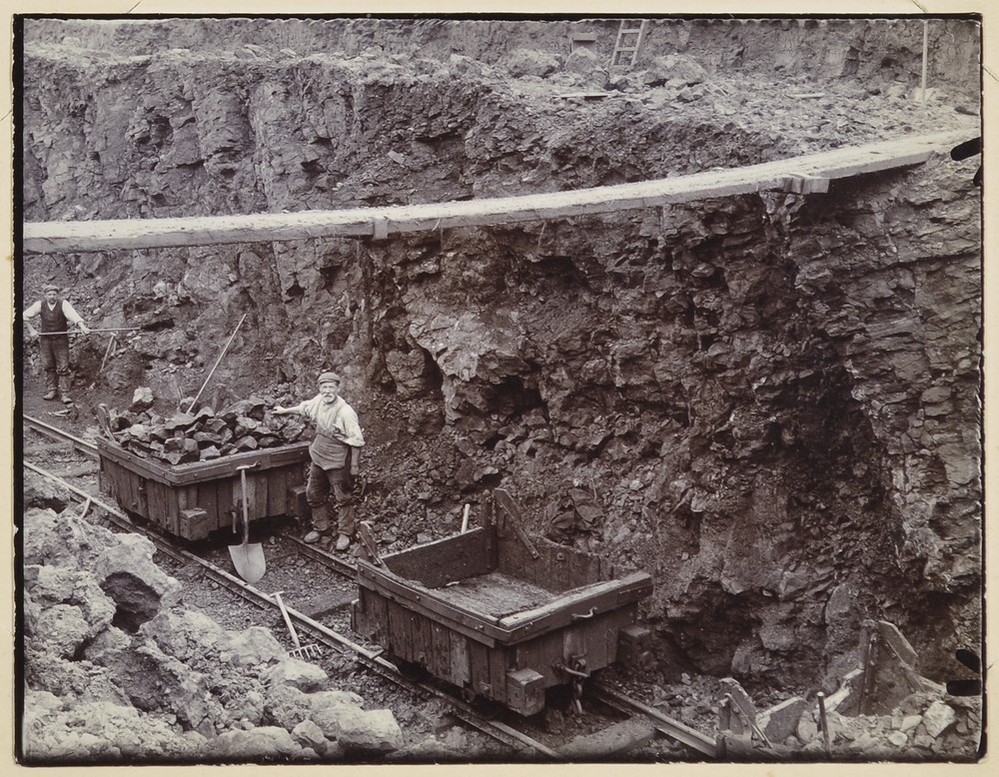
we have no period images of Holwell mine, this site is Wartnaby which is very local so the working style was likely the same.
Method of working the ironstone. All the clay and top hamper is wheeled across these boards and deposited on the opposite side as the ironstone is removed in the rail trucks, thus causing a flat surface but at a lower level than before. 1913.
BGS archive
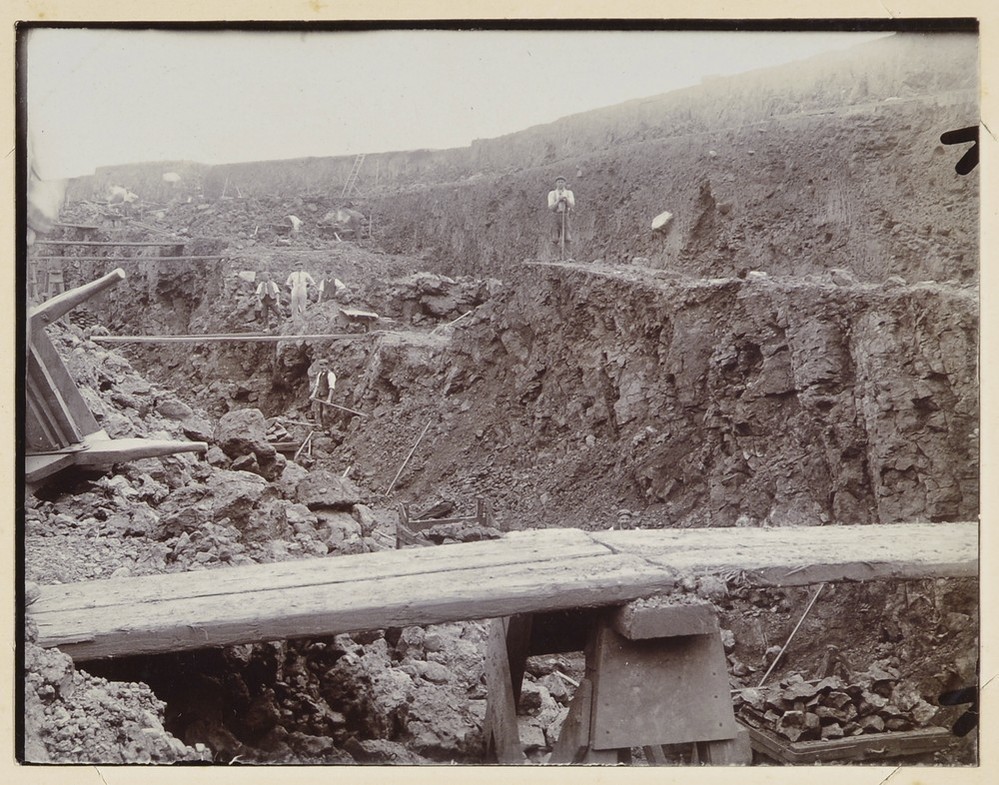
Ironstone overlaid by Boulder Clay. This Ironstone is of the same horizon as the celebrated Cleveland iron ore which belongs to the Marlstone or upper part of the Middle Lias. 1913 very stern milled timber.
BGS archive
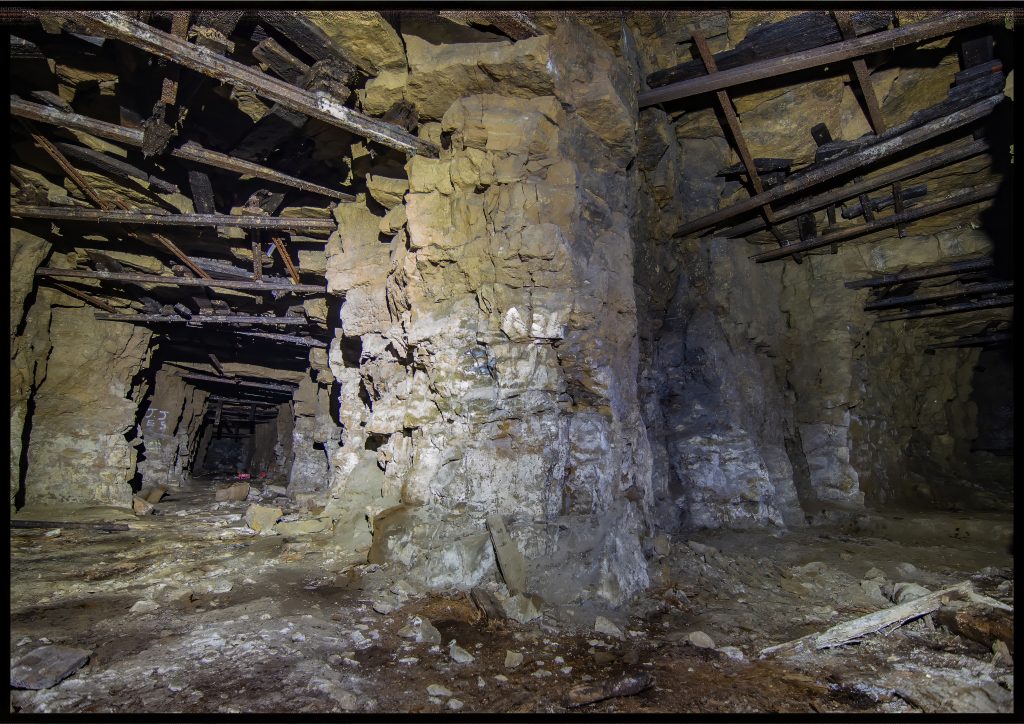
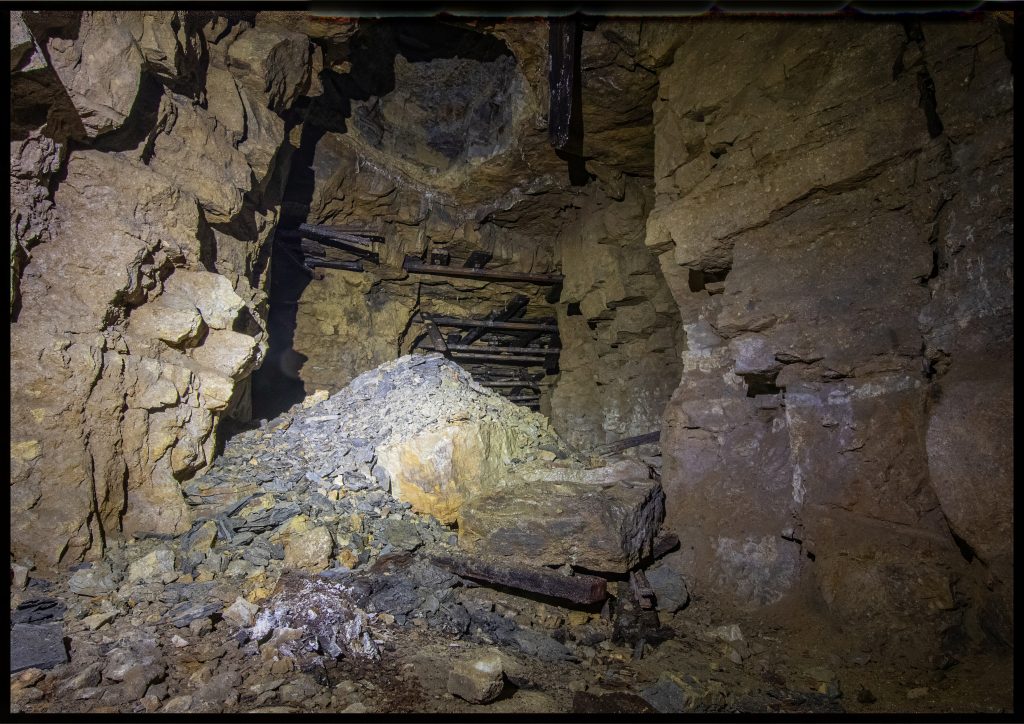
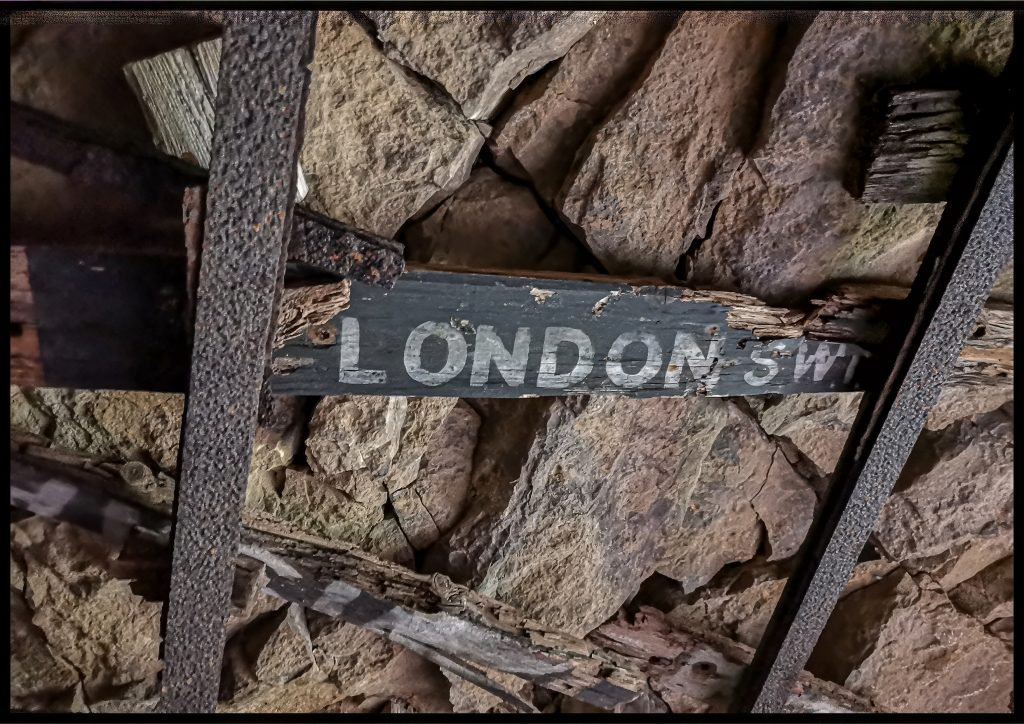
Various states of the shallow workings are captured in the above images . Its a matter of time Cleary, before the for ever rotting timber gives way causing further sink holes .
photos by Glyn Preston
